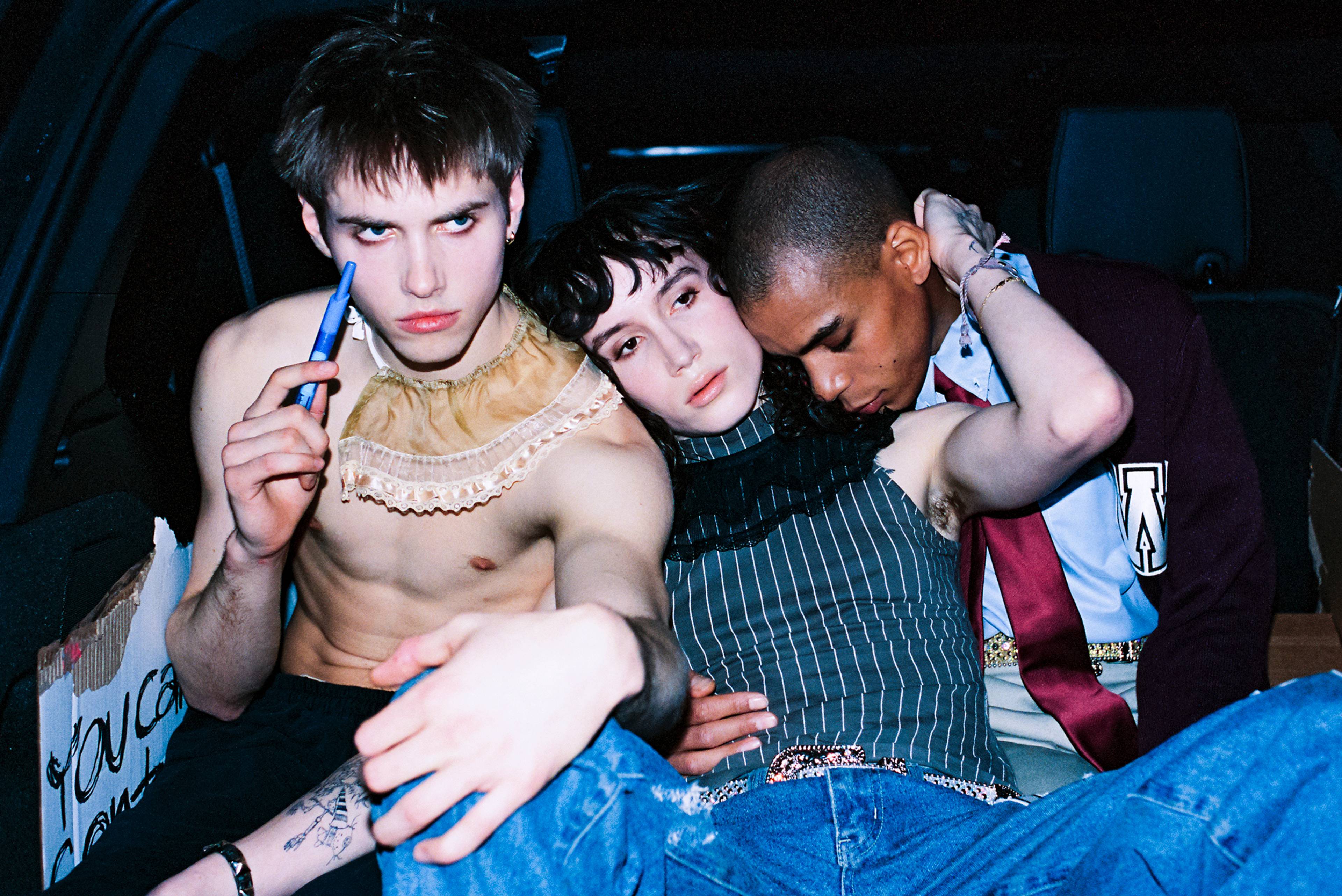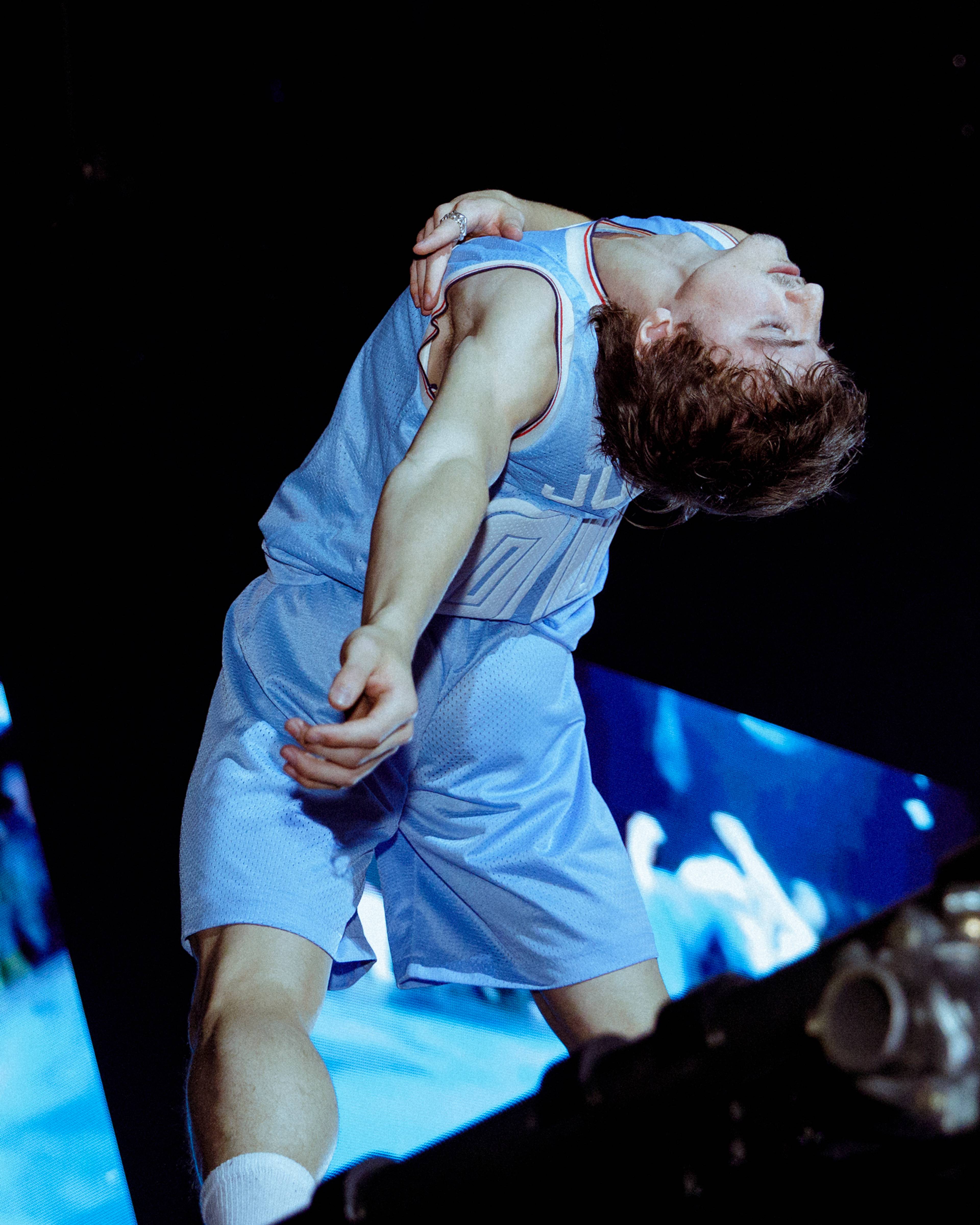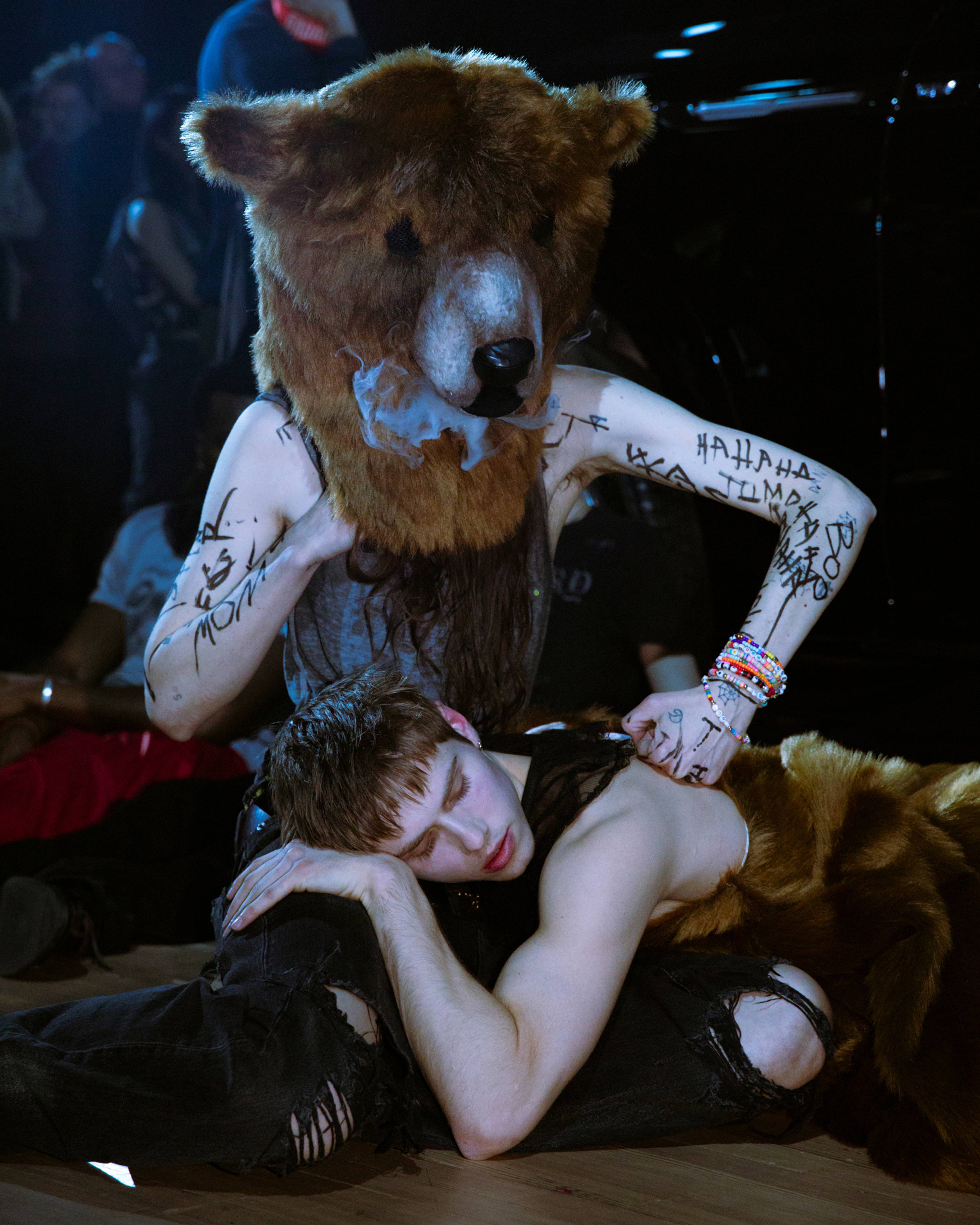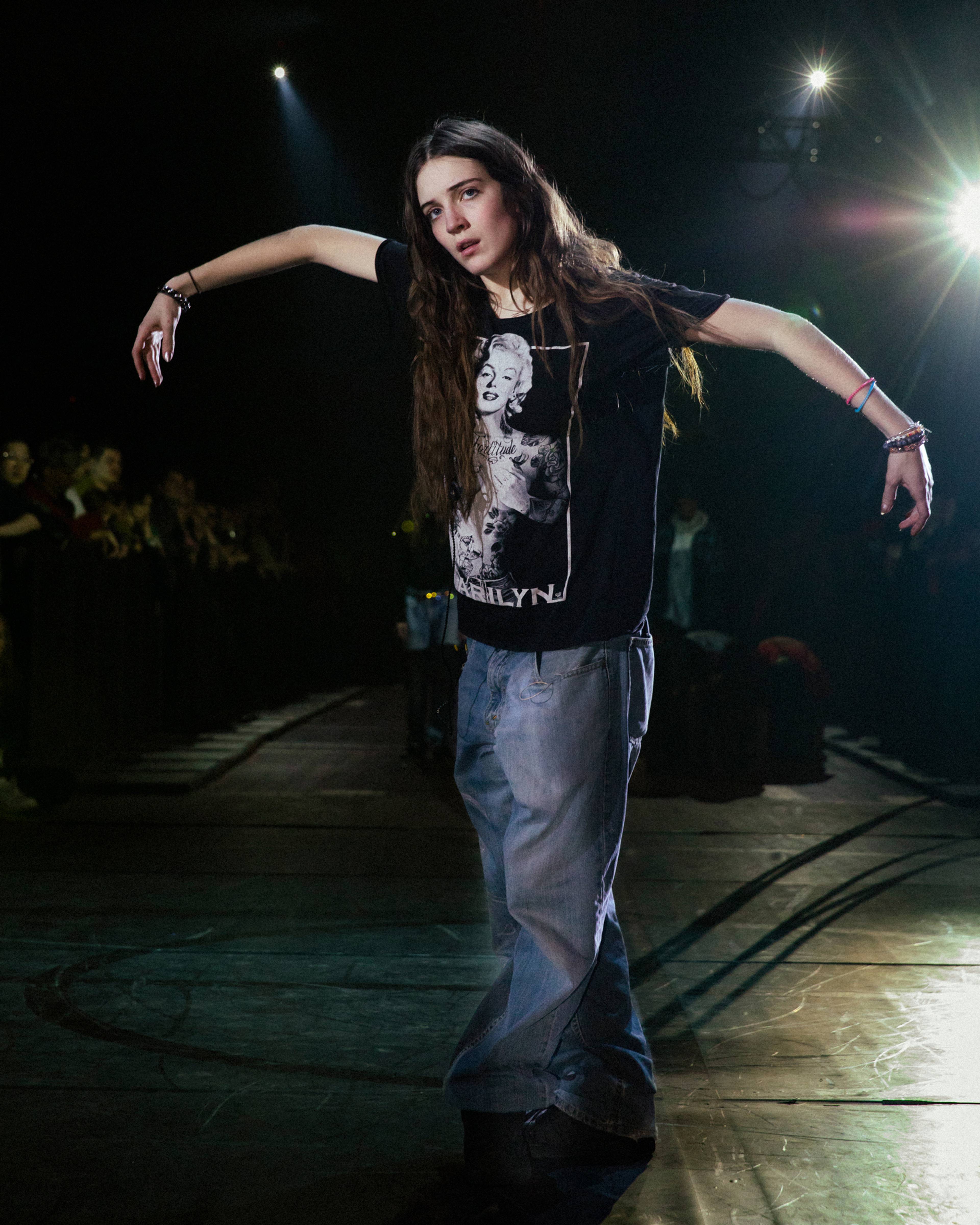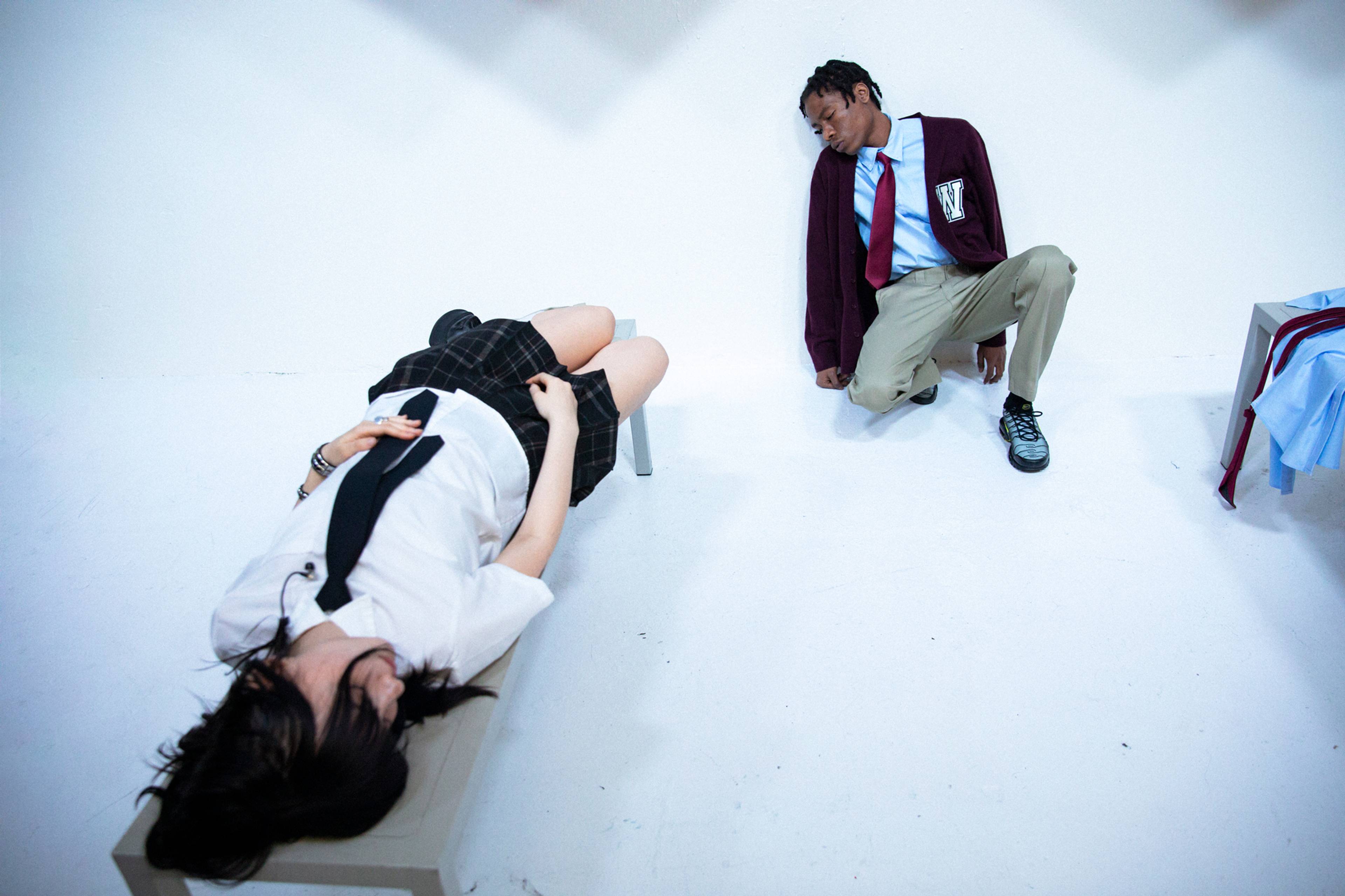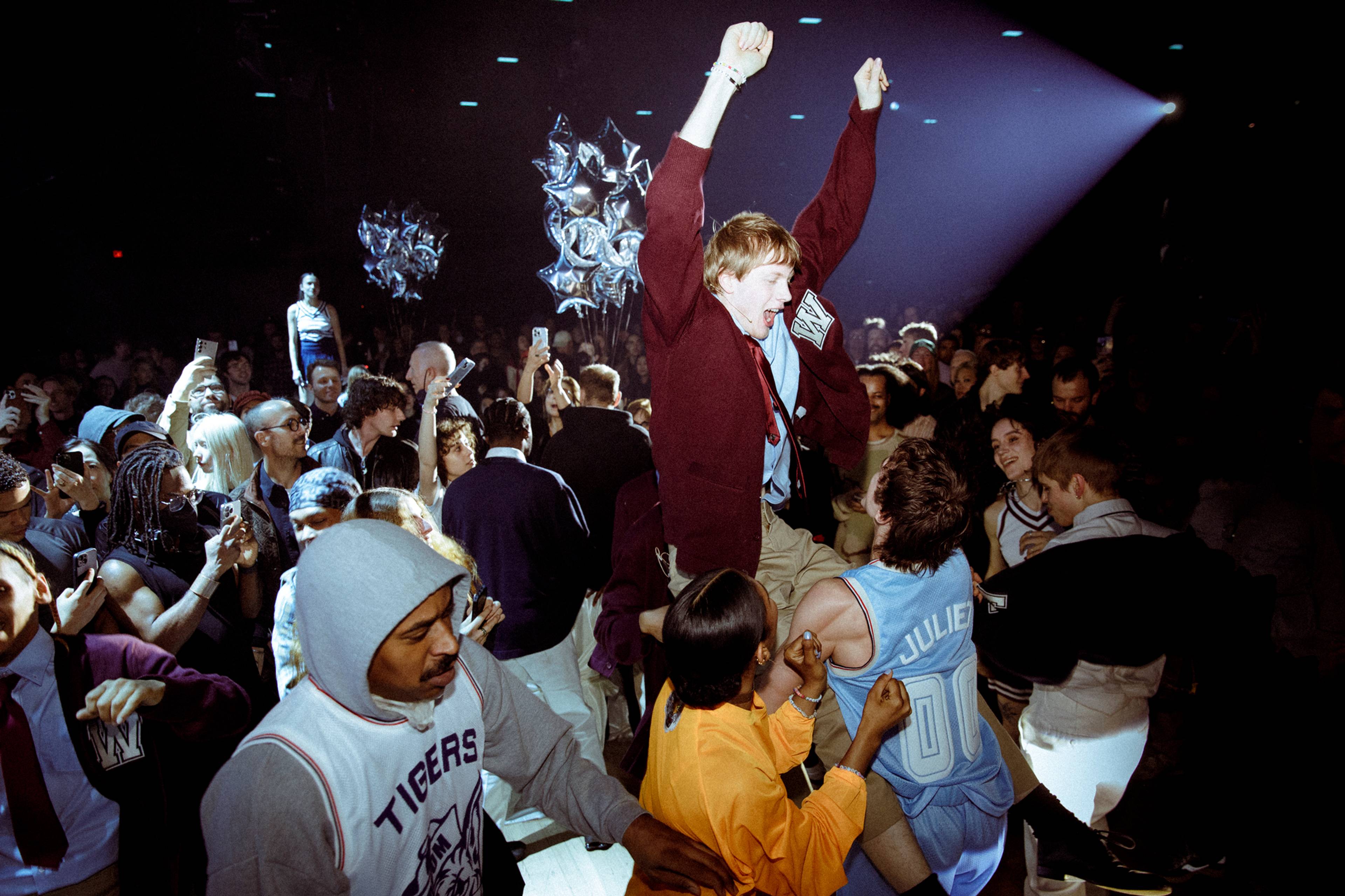Anne Imhof’s performance apparatus boils down to a logic of photogenicity: enhancing live bodies for the camera lens through the event that is performance art. Working in a tradition that once cherished unmediation (think the immediacy of Yvonne Rainer, or Tino Sehgal’s no-photo policies), hypermediation remains, in itself, a powerfully disruptive tactic. It is felt most acutely in the viewer, who is permitted, in fact encouraged, to use performance to indulge in amateur picture-taking – that is, as long as they use the right hashtag. Such was the humble request of the press pamphlet of DOOM – House of Hope, Imhof’s new commission at New York’s Park Avenue Armory, which elaborates the German artist’s viral approach to performance on a dazzling budget, lavished on more than fifty performers and a dozen SUVs, among so much else. But photogenicity, too, is an art, much more than any amateur set-up: It comes with its own economy, its own formal qualities. In flexing both her image-compositional and dramaturgical prowess but perfecting neither, Imhof seems unclear – if hardly unserious – about exactly on which grounds to meet her work as it develops in scale and technique.
By dramaturgy, I specifically mean DOOM’s beginning, which was distinctively and joyfully theatrical, based on stage logics and led by narrative. As audiences were admitted to the Armory’s ever-breathtaking Drill Hall, we were met by black-clad crowd barrier fencing, effectively blocking us from the majority of the space, which had been dressed up like a mutant prom venue – a high school gym turned concert hall turned parking lot. To tightly pit the audience into a corner with poor visibility felt, for Imhof (who usually maximizes photographability for all viewers at all times) quasi-Brechtian. Importantly, the strategy also implicitly cited those many popular modes of performance that lie beyond contemporary art – rock concerts, dancefloors, fashion shows, theater halls – and which, therefore, haunt it.
Above us, a giant countdown clock set to three hours took off. Fashionably sinister music, composed by Ville Haimala (of Amnesia Scanner), began blasting from a lowered speaker array. Youngster cliques began populating the floor, climbing on top of cars, skateboarding, walking in quasi-religious procession, and howling from behind us. For a good twenty minutes, Imhof had her audience pinned to a sprawling operatic prelude that effortlessly conjured the affect saturation she is famous for: the angst of youth in the Kierkegaardian sense, as a fear without an object. In response, many of us put down their phones; there was, quite simply, too much going on.
But that intensity soon fizzled, taken over by the artist’s familiar content-farm approach. Barriers were removed, performers dispersed, and the cavern suddenly felt spacious, if not a little empty. Audiences were free to browse the scattered vignettes, each carefully composed and lit between the SUVs: performers hanging, fighting, texting, dancing, resting, tattooing, texting. Some were static; others mutated into rap concerts, dance-offs, and even recitals from Romeo & Juliet. Imhof’s entirely rational scenography, though, meant that nothing ever felt urgent or unmissable. Perfectly ambient, the volume of action – some skilled, others decidedly amateurish – was kept at the bare minimum to capture photographic attention.
Is Imhof, in fact, the most Gen X of artists – filtered by a millennial sensibility through Gen Z technologies?
Still, compared to earlier work, DOOM showed a keen interest in dramaturgical worldbuilding, if at the expense of mystery. Rather than having her audiences revel in the vacuous nature of performance itself (where performers can’t even be bothered to dress up, let alone move around), there was a genuine attempt to cycle through US youth culture’s most ham-fisted archetypes. There were grunge-types, long-haired skaters, brooding cheerleaders, oversexed basketball players, even a brief mosh pit; someone was getting a tattoo in the back of a car, a couple were making out on the gymnasium floor. Rather than actually unfolding a narrative, it veered, as performers droned choruses like “We’re fucked, we’re doomed, we’re dead, I think I made you up inside my head” and “I need discipline, I won’t disappear,” towards veritable pastiche. Was Imhof serious in her portrayal of a “doomed” generation? If so, which one is she talking about? The search for distinct (yet hyper-mediated) subcultures is much more MTV than TikTok. Is Imhof, in fact, the most Gen X of artists – filtered by a millennial sensibility through Gen Z technologies?
Regardless of her intentions, the great challenge to Imhof’s original and effective performance apparatus is that the fight for photogenicity, her de facto currency, is always already won by fashion. By this, I don’t mean the brand- and name-checking omnipresent in all of her productions (Balenciaga collaborators, Saint Laurent models, culturati nepo-babies), though that certainly doesn’t help. I mean fashion as a whole industry that, far outside the frame of art, uncontroversially spends enormous effort and money on phantasmatic environments with the sole purpose of producing cool images. The instrumentalization of the image to serve consumer economies, and the willingness to turn any social zeitgeist into sellable style over and over, through modes of production like casting, styling, and runway performance – yes, even liveness – are already perfected by fashion. Like Imhof’s sulking tableaux vivants, the fashion image is frequently poor on narrative because it actually doesn’t really need it: It operates by the muted semiotics of coolness, which prefers to avoid language altogether. In an ever more rapacious drive towards virality, the currency of our times, how is art, even Imhof’s, supposed to compete?
Michael de la Nuez
Eliza Douglas (in bear mask) and Toon Lobach
Talia Ryder
DOOM shows interest in theater, opera, and even cinema, but Imhof remains squarely in the idiom of fashion: a navigable photoshoot. This is not in itself a bad thing; but it does require a particular perfectionism in its emulation in order to be interesting as art. And Imhof’s premise remains highly interesting: The artist invites the audience to be the editorial’s photographer, assisting us from behind the scenes with movement, set design, and lighting, but letting us feel in charge of the final shot, creating the illusion of autonomy so crucial to social media logic. But what exactly are we so proudly posting? The grandeur of her Americana, on US soil no less, inevitably leads us to scrutinize the granular details. What DOOM achieved in scenography, choreography, and art direction immediately exposed its shortcomings in styling, a practice indigenous to fashion, and one that her past works – in Hamburg, Venice, Paris – have more masterfully harnessed.
If, in staging a high-school homecoming as viral zombie-ritual, Imhof seems out of depth, or simply too European and romantic, you can hardly blame her. Americana is not only the most rinsed of aesthetics, but also a highly self-reflexive one, already sublimated by its own media devices long ago. If in doubt, just take a look at millennial touchstones like Gregg Araki’s 2004 film Mysterious Skin or Bruce Weber’s work for A&F Quarterly. It’s all there.
Lia Wang and Cranston Mills
Caspar von Bulow
___
DOOM – House of Hope
Park Avenue Armory, New York
3 – 12 Mar 2025


